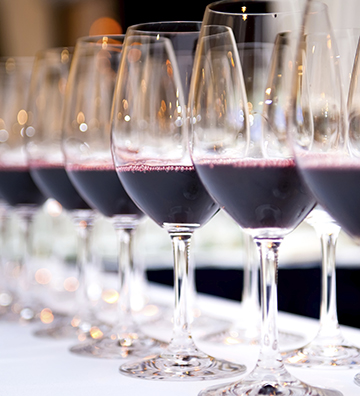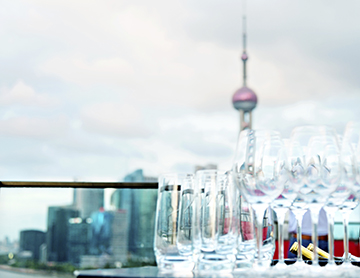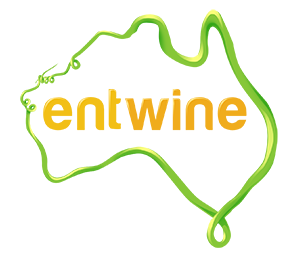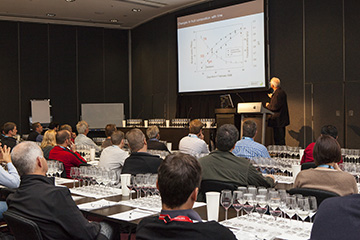Getting the most out of your sprayer
Survey explores grape and wine production practices
Voting closing soon in AWRI Board election
Seeking samples for authenticity research
The AWRI helpdesk – supporting grapegrowers and winemakers
Is your grape variety on the OIV list?
AWITC webcasts available to delegates
Order the latest AWRI staff publications online
Getting the most out of your sprayer |
|||||||||||||||
 |
As buds burst and shoots emerge in vineyards across Australia, wine growers are busily keeping everything in check, including pests and disease. Effective spray application remains critical in a successful vineyard to ensure pests and disease are managed. A series of spray application workshops will be held across Victoria and South Australia in October to deliver key information for effective spray application. Local and international speakers have been recruited to present the latest on:
The day will also include a practical demonstration of spray application assessment and how to improve spray penetration and coverage. Changed regulations have resulted in changes to some chemical labels and obligations for spray applicators. These will also be discussed. Workshop locations and dates are listed below. More details will be added to the AWRI events calendar as they are confirmed.
The AWRI is collaborating with Wine Australia to support these workshops. For more information, contact Adrian Loschiavo at the AWRI on 08 8313 6600 or adrian.loschiavo@awri.com.au. |
||||||||||||||
Survey explores grape and wine production practices |
|||||||||||||||
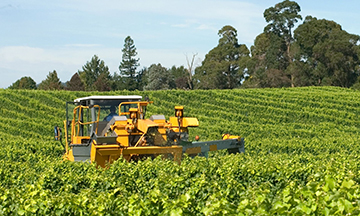 |
The AWRI has recently launched a major survey that aims to build an accurate picture of the grape and wine production practices currently being used in Australia. Results from the survey will help inform future grape and wine research, development and extension activities. The success of the survey depends on receiving a large number of responses from a wide range of grapegrowing and winemaking businesses. So far more than 300 responses have been received, which is a great start, but lots more are needed to ensure the results are as representative of industry as possible.
Please visit http://www.winesurvey.com.au/ to complete the survey now! All respondents will go into the draw to win a trip to Bordeaux, France to see the latest vineyard and winery equipment at Vinitech-Sifel 2016. Participants will also receive a copy of the aggregated survey results, allowing for comparisons to be made with regional or national averages. For more information about the survey, please contact Simon Nordestgaard on (08) 8313 6600 or email survey@awri.com.au. Competition terms and conditions are at http://www.winesurvey.com.au. |
||||||||||||||
Voting closing soon in AWRI Board electionAn election is currently being held for the vacant position on the AWRI Board of Directors in the small producer category (<2,000 tonnes). Five nominations were received in this category:
Producers in the small category are strongly encouraged to vote for their preferred candidate. This is an excellent opportunity to have a say in electing a candidate that can contribute to the Australian grape and wine research and development agenda. Voting will close at 5 pm, Friday 16 September 2016. The election is being conducted electronically with assistance from Elections Australia Pty Ltd. Voting instructions were sent to all small levy payers on 29 August 2016. Candidate profiles are available from the AWRI website. If you did not receive voting instructions and believe you are eligible to vote or require any further information, please contact Shiralee Dodd 08 8313 6610 or Shiralee.Dodd@awri.com.au. |
|||||||||||||||
Seeking samples for authenticity researchIf you attended the AWITC you would have heard about the AWRI project looking at ways of determining the geographical provenance of wine using stable isotope ratios and trace elements. As this project moves into the next phase, it will be important to verify that the chosen parameters do not depend on grape variety and are stable from year to year. If you produce a single-vineyard or single-block wine and have bottled wine going back eight to ten years, could you donate two bottles to help this project? Or do you have access to a variety block with a dozen or so cultivars that you could send 10 kg of each to Adelaide next vintage? It would be very useful to have at least three or four blocks coming from different bedrock types across Australia. If you can help, please email helpdesk@awri.com.au and the project team will be in touch with you over the coming weeks. |
|||||||||||||||
The AWRI helpdesk – supporting grapegrowers and winemakersEach year the AWRI helpdesk responds to more than 2,000 enquiries across winemaking, viticulture, health and regulatory issues. The helpdesk also offers an investigative service for problems that cannot be resolved by advice over the phone or by email. Samples of grapes or wine can be sent in for independent analysis and interpretation to determine the root cause of an issue, with a formal report prepared if required. Typical investigations include:
To access the service, please contact the AWRI helpdesk on 08 8313 6600 or helpdesk@awri.com.au. |
|||||||||||||||
Is your grape variety on the OIV list? |
|||||||||||||||
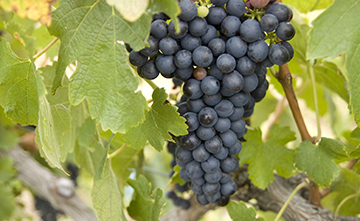 |
The OIV maintains an International list of vine varieties and their synonyms on behalf of the EU, and this list can be viewed on the OIV’s website. The list is compiled from lists of vine varieties submitted by OIV member states and other countries. It’s important to be aware, however, that not only the EU, but Australian law, requires that grape varieties referenced on Australian wine labels must be on this OIV list. This list can be updated at any time and if you have a request for a new vine variety or synonym to be included on the OIV list, please contact Steve Guy at Wine Australia on steve.guy@wineaustralia.com. | ||||||||||||||
Staff achievements |
|||||||||||||||
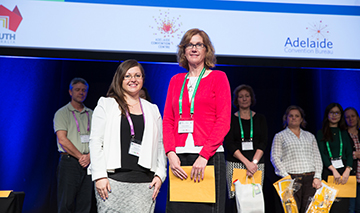 |
A number of staff achievements have occurred since the last eNews – including a major journal award, several prizes at the 16th AWITC and the AWRI’s first ever Len Evans Tutorial Scholar!
A paper authored by Creina Stockley and Dan Johnson won a Tanner Award for the most cited paper published in the journal Comprehensive Reviews in Food Science and Food Safety in 2013. The paper, entitled ‘The case for anthocyanin consumption to promote human health: a review’, was published with scientists from the Edmund Mach Foundation in Trento in Italy. It provides a comprehensive appraisal of the literature on the human health effects of anthocyanins – the red-coloured compounds found in berries, red grapes and red wine. AWRI Senior Scientist Wes Pearson has just been announced as one of the Len Evans Tutorial Scholars for 2016. This is a very exciting opportunity for Wes to further develop his wine judging skills. Best student poster – oenology: Mango Parker Congratulations to all! |
||||||||||||||
AWITC webcasts available to delegatesAll AWITC delegates should now have received an email with details about how to access the webcasts of plenary sessions from the 16th AWITC. For assistance with accessing the webcasts, please contact the AWITC office on info@awitc.com.au. |
|||||||||||||||
Order the latest AWRI staff publications onlineAccessing the latest AWRI publications is easy. Visit the AWRI Publications web page to:
A full list of AWRI publications published since the last eNews is included below: 1838 Gawel, R., Smith, P.A., Waters, E.J. Influence of polysaccharides on the taste and mouthfeel of white wine. Aust. J. Grape Wine Res. doi: 10.1111/ajgw.12222: 8 p.; 2016. 1839 Petrie, P. Ask the AWRI: Help! What cultivar (or clone) is this? Aust. N.Z. Grapegrower Winemaker (630): 40-41; 2016. 1840 Sadras, P., Moran, M., Petrie, P. Delayed pruning: a tool to counteract warming effects. Barossa Shiraz vineyard and wine case study. Aust. N.Z. Grapegrower Winemaker (630): 48, 50-51; 2016. 1841 Bramley, R.G.V., Siebert, T.E., Herderich, M.J., Krstic, M.P. Patterns of within-vineyard spatial variation in the ‘pepper’ compound rotundone are temporally stable from year to year. Aust. J. Grape Wine Res. doi: 10.1111/ajgw.12245: 6 p.; 2016. 1842 Sadras, V.O., Moran, M.A., Petrie, P.R. Wine as G x E: effect of temperature on vine and fruit phenotype. [Le vin comme G x E : effets de la température sur la vigne et le raisin.] Prog. Agric. Vitic. 133 (5): 14-19; 2016. 1843 Cowey, G. Ask the AWRI: Not so pretty in pink. Aust. N.Z. Grapegrower Winemaker (631): p. 86; 2016. 1844 Luo, X., Smith, P., Raston, C.L., Zhang, W. Vortex fluidic device-intensified aqueous two phase extraction of C-Phycocyanin from Spirulina maxima. ACS Sustainable Chem. Eng. 4 (7): 3905-3911; 2016. 1845 Muhlack, R.A., O’Neill, B.K., Waters, E.J., Colby, C.B. Optimal conditions for controlling haze-forming wine protein with bentonite treatment: investigation of matrix effects and interactions using a factorial design. Food Bioprocess Technol. 9 (6): 936-943; 2016. 1846 Patacq, G., O’Brien, V. Why wine innovation must become cool again. WBM (July/August): 34-35; 2016. |
|||||||||||||||
AcknowledgementThe AWRI acknowledges support from Australia’s grapegrowers and winemakers through their investment body, Wine Australia, with matching funds from the Australian Government. The AWRI is a member of the Wine Innovation Cluster in Adelaide, South Australia. |
|||||||||||||||


